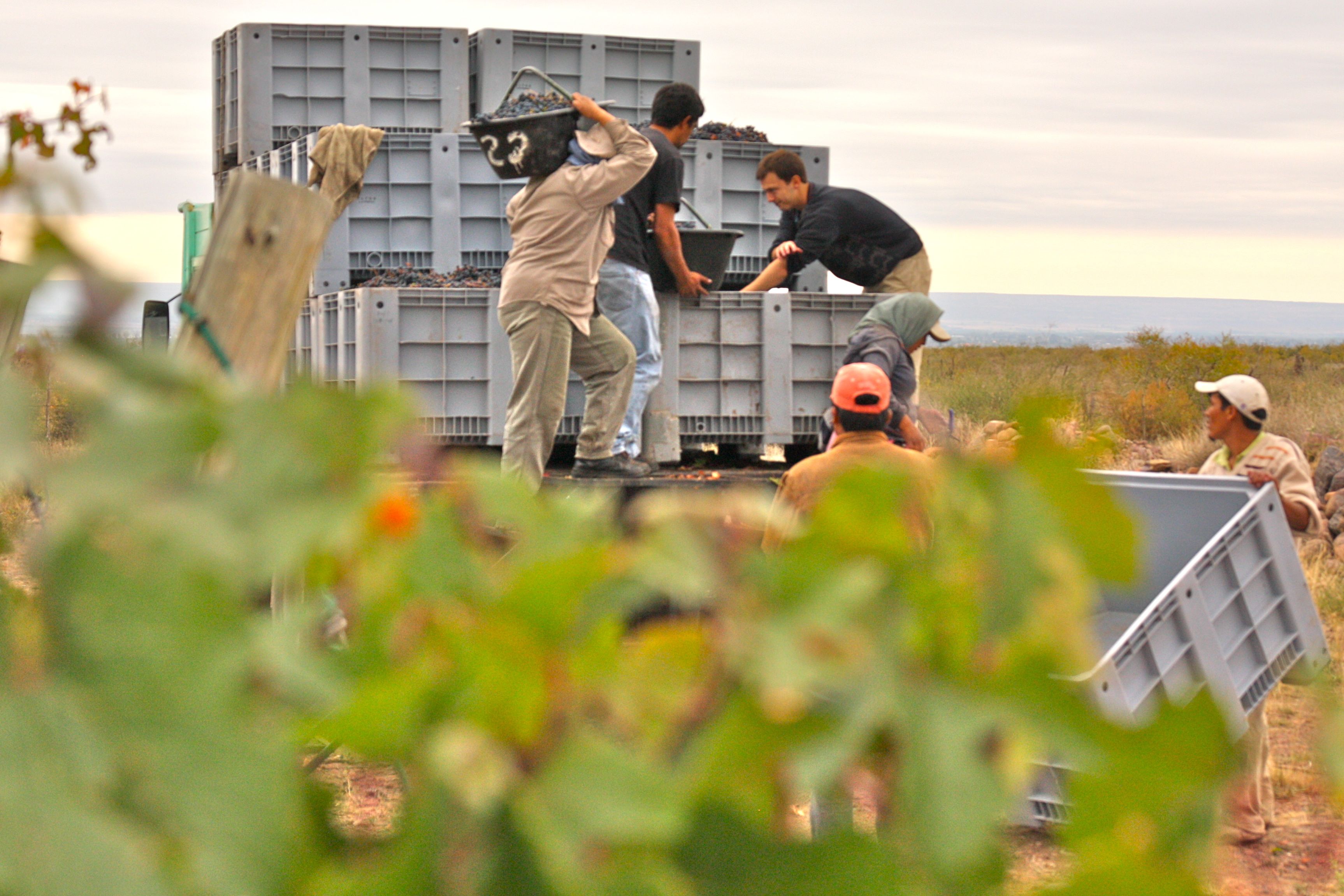Today we harvest Vista Flores, a region tucked directly below the Andes in the Uco Valley. Contrary to the warm, red and orange landscape of the desert-like Lujan de Cuyo, this quintessential Mendoza scenery feels as though it may have been plucked straight from a storybook. Mountains tower over vines, the snow-capped peaks just barely visibly through the fog and clouds.

During the 1 hour trek from the city of Mendoza to Vista Flores, you slowly enter another world altogether. The accesso, super stores and gas stations are replaced by sleepy, rustic towns adorned with hanging laundry and teeming with families. The brown-red desert is replaced by a lush, green valley. As you drive down the historic ruta de manzanas you’ll pass groves of apple, pear and quince trees and the trucks that bulge with their fruit. You’ll be greeted multiple times via proud community signs painted brightly with the fruits of their labor: Bienvenidos a Valley de Uco…

Today, the hot sun of Mendoza has been replaced with cool fog and threatening rain-clouds hugging the Andes Mountains. As a visitor I mourn the sun, but the grapes and the harvesters are content with the conditions.

In Uco Valley, the proximity of the mountains reminds you where you stand. The rock-strewn landscape, manicured vines and fresh, cool air are all small details that differentiate Vista Flores. This fresh, cool climate is a direct result of the high altitude.
Beyond the geography, the altitude and the climate, something else differentiates Vista Flores. Something that can’t be spotted at first glance, but was tasted by Alberto Antonini. During a blind tasting over 5 years ago Antonini tasted something compelling in a wine that had come from Vista Flores. He wasn’t sure why this wine possessed a rare complexity and minerality, but he was powerfully impressed.
Pedro Parra, Altos Las Hormigas’ soil specialist, had long suspected this area had the potential to showcase very unique soil structure. The Terroir Project was born. Together with Antonini and the technical team, Parra located a single block of soil with consistent layers, high calcareous stone content, and a 5% presence of a clay in the stone layer, which is very uncommon in Mendoza. This discovery at Morales Vineyard, was the same area that produced the wine Antonini had singled out.
This discovery and continued work at Morales Vineyard prompted further investigation into Chacayes, Dyonisos and other vineyards of Vista Flores. Dyonisos Vineyard sits on a secondary terrace of an ancient river called Arroyo Grande, located at 1250 meters above sea level in Vista Flores. Calcareous soils were deposited in this region as the snow melt dragged it along the Arroyo Grande during the last 2 or 3 old post glaciar events. Pedro discovered the soils are sandy clay and over 40% gravelly. The gravels are surrounded by clay and most importantly, contain 10 to 15% active limestone.

It was this unique limestone presence that Antonini had tasted in the early Vista Flores sample. Limestone enhances the firmness of the tannins, and coaxes out a chalky, mineraly personality of the wine.
While working harvest at Dyonisos it is evident that this harvest team knows they are handling «special» grapes. The careful, swift team inspected every tacho, every bin. There was a sense of heightened attention, graceful movements and precision. This quiet, efficient style seemed to come with knowing what you had in your hands. It’s the small details that matter at Dyonisos Vineyard. Its how little you do, not how much you do.
It’s about team work. It’s about knowing when to harvest Vista Flores, it’s about coaxing the potential out of Dyonisos Vineyard. A cluster left behind is scooped up by this watchful eye…
afterall, that’s Vista Flores Malbec.







